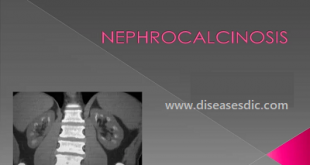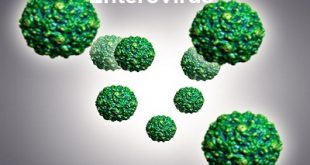Definition
Norovirus infection is the most common cause of infection in gastrointestinal outbreaks. It causes sudden onset of nausea, vomiting, and diarrhea. Sometimes it may also cause stomach cramping. In addition, the person may feel tired, muscle ache, headache, and low-grade fever. Norovirus is a very contagious virus that can affect anyone. You can get it from the infected person or by touching contaminated surfaces. These symptoms can be serious for some people, especially young children, and older adults. Norovirus infection occurs most frequently in closed and crowded environments such as hospitals, nursing homes, child care centers, schools and cruise ships.
History
1929- Gastroenteritis, that was probably due to norovirus, was first described by Zahorsky.
The outbreak had occurred in 1968 at a school in Norwalk, Ohio, US, with a high attack rate of illness among students and teachers. The illness was characterized by nausea, vomiting, and diarrhea with duration of illness of 12–24 hours.
1978- In Australia, the first confirmed norovirus outbreak and was associated with oyster consumption
2002- The norovirus became the official genus name, following further investigation of the viral taxonomy by sensitive molecular techniques.
Epidemiology of norovirus infection
- Norovirus is the most common viral cause of epidemic gastroenteritis worldwide; it is also a common cause of endemic diarrhea in community settings.
- In the United States, norovirus has become the most common cause of gastroenteritis in adults and children since the introduction of rotavirus vaccination. Each year, norovirus causes 19 to 21 million illnesses, including 570 to 800 deaths, 56,000 to 71,000 hospitalizations, 400,000 emergency department visits, and 1.7 to 1.9 million outpatient visits.
- Norovirus antibody seroprevalence rises progressively during childhood; more than 90 percent of young adults are seropositive. However, immunity is not long lasting, and reinfection can occur. Exposure over time to a diversity of norovirus strains may result in repeat infections.
Pathophysiology
The pathological basis of human norovirus-induced diarrhea is not well understood.
- Although the intestinal epithelium appears to remain intact during human norovirus infection, there are histopathological changes in the small intestine including broadening and blunting of the villi.
- Furthermore, there is transient malabsorption of d-xylose, fat, and lactose, which could be related to shortened microvilli and decreased brush border enzyme activity, which has both been observed during acute infection.
- Intestinal inflammation is modest, with the exception of a significant increase in intraepithelial cytotoxic T cells reported in one small cohort of naturally infected subjects.
- Altogether, the available data suggest that human norovirus-induced diarrhea is not caused by structural damage of the intestinal wall but instead by alterations of secretory and/or absorptive processes.
- Human norovirus infections are typified by a high incidence of vomiting episodes but the underlying pathophysiology of this manifestation is also undefined. One study of infected volunteers noted a marked delay in gastric emptying, possibly due to abnormal gastric motor function.
Risk factors
Some of the risk factors that may become infected with norovirus infection
- Contact with others with gastroenteritis (in and outside the household)
- Having animals in the household (both pets and farm animals)
- Having contact with someone who has norovirus infection
- Attending preschool or a child care center
- Living in close quarters, such as in nursing homes
- Eating in a place where food is handled with unsanitary procedures
Causes of norovirus infection
Norovirus is transmitted from person to person. The main causes of norovirus infection are the contact with the material which is contaminated with feces or fluid from the norovirus infected person. Some of the transmission methods are as follows:
- Consuming norovirus contaminated foods
- Drinking norovirus contaminated water
- Being close contact with the norovirus infected person
- Touching your mouth with your infected hand which is from contaminated surface
It is not been determined how the virus cause the disease exactly.
Transmission of norovirus
Symptoms
- Nausea
- Vomiting
- Abdominal pain or cramps
- Stomach pain
- Watery or loose diarrhea
- Malaise
- Low-grade fever
- Myalgia
- Body ache
- Lethargy
- Decrease in urination
- Dry mouth and throat
- Feeling dizzy when standing up
- Children cry with few or no tears or are unusually sleepy or fussy
Complications of norovirus infection
- Dehydration
- Excessive thirst
- Dizziness
- Dry mouth
- Dark urine
- Little or no urine
- Rapid heartbeat
- Rapid breathing
- High fever
- Bloody vomit
- Bloody stools
Diagnosis and test
Real-Time PCR Assays
Real-time reverse transcriptase-polymerase chain reaction (RT-qPCR) is most widely used for diagnosis of norovirus. During this assay, the genetic material of norovirus can be identified by testing on the sample of stool, vomitus, and environmental specimens. This assay detects the genetic material (RNA) of the virus.
Enzyme immunoassays (EIAs)
Several enzyme immunoassays (EIAs) for detecting norovirus in stool samples are available. The Food and Drug Administration has cleared an EIA for detecting norovirus during outbreaks. EIAs are currently not sensitive enough (<50%) for diagnosing individual cases.
Treatment and medications
- There’s no specific treatment for norovirus infection, and recovery generally depends on the health of your immune system.
- The aim is to make sure that you or your child have plenty of fluids to avoid lack of fluid in the body (dehydration) until their immune system has the time to clear the infection.
- In cases of severe volume depletion, intravenous fluid and electrolyte resuscitation may be necessary.
Medications
- Antidiarrheal agents may be used sparingly but should be avoided in children.
- Over-the-counter analgesics such as ibuprofen and acetaminophen.
- Antiemetic’s (eg, promethazine) can be used for symptomatic relief (drug-specific product labeling should be consulted).
Home remedies
- Drink plenty of fluids, such as plain water, over-the-counter oral hydration solutions, sports drinks, and home-made broths to help to prevent dehydration.
- Drinking beverages with high sugar content, such as soft drinks and fruit juices, should be avoided as they can make diarrhea worse.
- Smaller meal portions and a bland diet (e.g. soup, noodles, rice, or crackers, broiled vegetables) may help limit vomiting.
Prevention of norovirus infection
- Maintain good personal hygiene
- Avoid crowded or confined spaces
- Be mindful of contaminated surfaces
- Disinfect your home
- Drink plenty of water
- Clean surfaces with a bleach solution, paying particular attention to the toilet and toilet area
- Dispose of vomit and fecal matter carefully, to avoid spreading norovirus by air.
- Reduce traveling until signs and symptoms have ended.
- Cook seafood thoroughly.
- Avoid drinking contaminated water and eating contaminated food.
- Wash thoroughly the fruits and vegetables before use.
 Diseases Treatments Dictionary This is complete solution to read all diseases treatments Which covers Prevention, Causes, Symptoms, Medical Terms, Drugs, Prescription, Natural Remedies with cures and Treatments. Most of the common diseases were listed in names, split with categories.
Diseases Treatments Dictionary This is complete solution to read all diseases treatments Which covers Prevention, Causes, Symptoms, Medical Terms, Drugs, Prescription, Natural Remedies with cures and Treatments. Most of the common diseases were listed in names, split with categories.








Very alerting and helping in keeping good health.
People should maintain a very high standard of hygine in their environment. Vegies should be thoroghly steamed before consumption particularly those ones whose method of cultivation is done with sewage water and is supplied to the market for sale.
what drugs will I take my private part is inching me cos of infection
Please consult a doctor.
There should be much attention on our both personal and food hygiene in the environment.